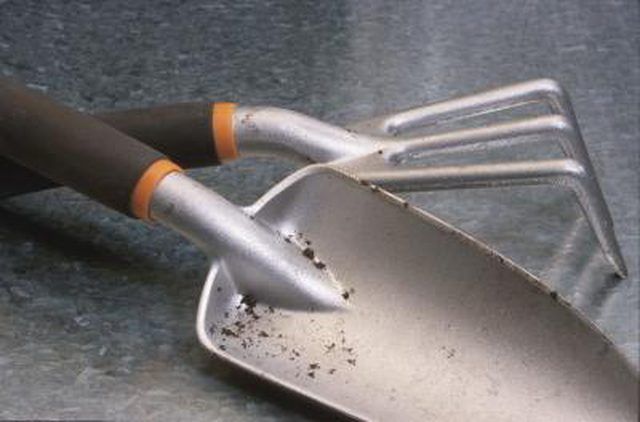Bulbs
Flower Basics
Flower Beds & Specialty Gardens
Flower Garden
Garden Furniture
Garden Gnomes
Garden Seeds
Garden Sheds
Garden Statues
Garden Tools & Supplies
Gardening Basics
Green & Organic
Groundcovers & Vines
Growing Annuals
Growing Basil
Growing Beans
Growing Berries
Growing Blueberries
Growing Cactus
Growing Corn
Growing Cotton
Growing Edibles
Growing Flowers
Growing Garlic
Growing Grapes
Growing Grass
Growing Herbs
Growing Jasmine
Growing Mint
Growing Mushrooms
Orchids
Growing Peanuts
Growing Perennials
Growing Plants
Growing Rosemary
Growing Roses
Growing Strawberries
Growing Sunflowers
Growing Thyme
Growing Tomatoes
Growing Tulips
Growing Vegetables
Herb Basics
Herb Garden
Indoor Growing
Landscaping Basics
Landscaping Patios
Landscaping Plants
Landscaping Shrubs
Landscaping Trees
Landscaping Walks & Pathways
Lawn Basics
Lawn Maintenance
Lawn Mowers
Lawn Ornaments
Lawn Planting
Lawn Tools
Outdoor Growing
Overall Landscape Planning
Pests, Weeds & Problems
Plant Basics
Rock Garden
Rose Garden
Shrubs
Soil
Specialty Gardens
Trees
Vegetable Garden
Yard Maintenance
How to Grow a Good Mother Plant
How to Grow a Good Mother Plant. A mother plant is a healthy plant from which you take cuttings to produce clones. These clones or daughter plants will be identical to the mother plant. If you want healthy clones, then you must start with a healthy mother plant. A bushy plant offering you multiple branches makes a good mother plant. Once you've...

A mother plant is a healthy plant from which you take cuttings to produce clones. These clones or daughter plants will be identical to the mother plant. If you want healthy clones, then you must start with a healthy mother plant. A bushy plant offering you multiple branches makes a good mother plant. Once you've established a mother plant, with proper care, it can last for years. Clones can grow to be mother plants, too.
Things You'll Need
Seedlings
Soil
2 1/2 inch square pots
Scissors
Water
Knife
Sunlight or grow lights
Select a sturdy looking seedling plant to start pampering. This will become the mother plant. Plant in a 2 1/2-inch square pot. These work best for rooting and pruning.
Grow a mother plant slowly. When it produces three or four side shoots cut the plant back. This forces it to produce a bigger root system and many more branches that are strong enough to create daughter plants.
Let the cut back branches grow to about 5 inches each in height. Some will grow faster and taller than others. When the first branches reach 5 inches start pinching back the growing tips right above a leaf node---the place on a plant stem where a bud forms and new leaves grow out--so the slower growing branches can catch up.
When all the branches get to about 6 inches in height it's time to take some cuttings. Look for nodes on the mother plant's stems that have put out new stems and leaves since first cutting it back in Step 2. Take cuttings right above those nodes.
Plant the new cuttings in 2 1/2-inch pots. As they grow keep the plant pruned in the middle by pinching back stems so light can penetrate all parts of the plant.
Slowly upgrade the size of the mother plant's pot until a 1-gallon pot size is reached. Continue to maintain the mother plant in this size pot. This means taking regular cuttings and pruning the roots properly.
Prune the mother plant's roots at least once year; more if roots start growing out of the bottom of the container. First, cut back the top of the plant to just above the bottom leaf nodes on every branch. Leave one or two leafing shoots at the end of each branch.
Gently remove the mother plant from the pot and cut 3/4 inch from the sides and one inch off the bottom of the root system with a knife. Pour fresh composted soil in the bottom of the container to a level of 1 inch. Put the plant back into the pot and fill around the sides of the roots with fresh soil. Tamp it down to make sure there are no air pockets and water.
Tips & Warnings
If the stalks of new cuttings are strong and healthy they will be able to the support the growth of new shoots in the daughter plants. This means that the mother plant must be grown to be strong and healthy itself.
Be observant when it comes to your mother plant. Watch for deficiencies like leaves drying up or lackluster growth. This is a sign that fertilizing is needed. Mother plants are fertilized in two ways: in ground (liquid fertilizer is poured into the soil) and through the foliage (fertilizer is sprayed on to the leaves).
If you don't give the mother plant 18 hours of light per day, it will start blooming and then you won't be able to take cuttings until you can get it to stop blooming by providing it with even more hours of light.
After you take your first cuttings, allow the mother plant to produce two or three new side shoots at the tips of the new branches. Doing this will help keep the mother plant strong.